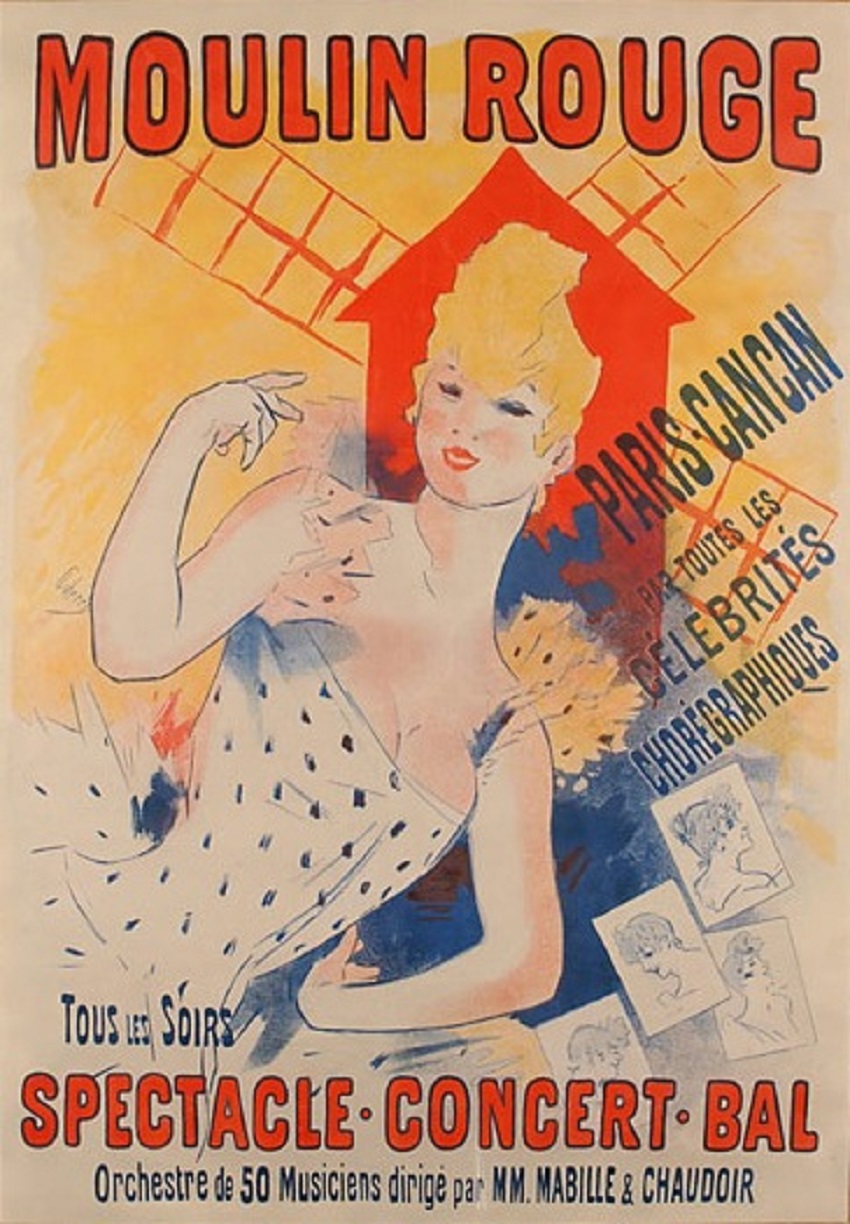
Jules Cheret a Parisian,
born to an artist family as his father was a typographer. Jules have ended his
scholastic years as a 13 year old when his parents couldn’t afford his
education anymore as afterword his father have placed him with a lithographer as
a 3 year apprenticeship. He later have sold some sketches to a couple of music
publishers in Paris yet he wasn’t satisfied, as he moved to London with hopes
of finding better ways to make money so he could afford his career as an artist
and started to do drawings for a furniture company which didn’t last long. With
no money, he’d returned to Paris and luck stroke him as he was led to his first
commissioned work to create a poster, and after that, it led him to be the
master of modern posters.
His works were unique
where Cheret dused on innovation, modernity and most of all artistic quality
where they were quite an effectiveness in commercial where he managed to
attract Paris’s attention. His style wasn’t like the traditional ones back then
neither as reproductions nor as prints (one colour on top of the other), his designs
were balanced and separated colours based on vibrant colours which back then
were unique and outstanding on its own brilliant design. His new lithography process
was later used by Henri de Toulouse-Lautrec ad in 1891 Loutrec for his first
time created a poster for the Moulin Rouge called ‘La Goulue’ yet earlier,
Cheret have created two posters for the Moulin Rouge in 1889 & 90.


His posters were focused on the created system by him, ‘The Grid System’. These rigid formats, simplified typography and structured layout have gave a character to the well-designed posters and yet a book named ‘Grid Systems in Graphic Design’ was presented by one of his students Josef Muller-Brockmann.


Info:
Cheret.Info - The Life and Art of French Painter Jules Cheret. 2014.Cheret.Info - The Life and Art of French Painter Jules Cheret. [ONLINE] Available at: http://www.cheret.info/. [Accessed 16 November 2014].
Cheret.Info - Jules Cheret's Revolution of Color. 2014. Cheret.Info - Jules Cheret's Revolution of Color. [ONLINE] Available at:http://www.cheret.info/a_revolution_of_color.html. [Accessed 16 November 2014].
Swiss Graphic Design. 2014. Swiss Graphic Design. [ONLINE] Available at:http://swissgraphicdesign.blogspot.com/. [Accessed 16 November 2014].
Pictures:
. 2014. . [ONLINE] Available at: http://ctgpublishing.com/wp-content/uploads/2012/05/Jules-Cheret.jpg. [Accessed 16 November 2014].. 2014. . [ONLINE] Available at:http://upload.wikimedia.org/wikipedia/commons/3/35/Cheret_MoulinRouge_ParisCancan.jpg. [Accessed 16 November 2014].. 2014. . [ONLINE] Available at: http://www.designers-books.com/wp-content/uploads/2009/08/1_walter_herdeg_portrait.jpg. [Accessed 16 November 2014].




